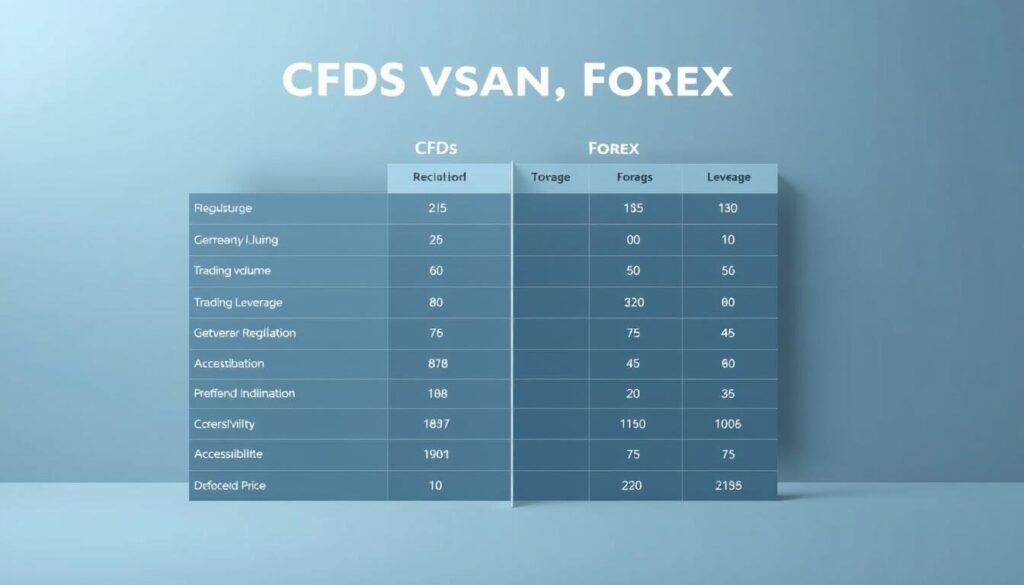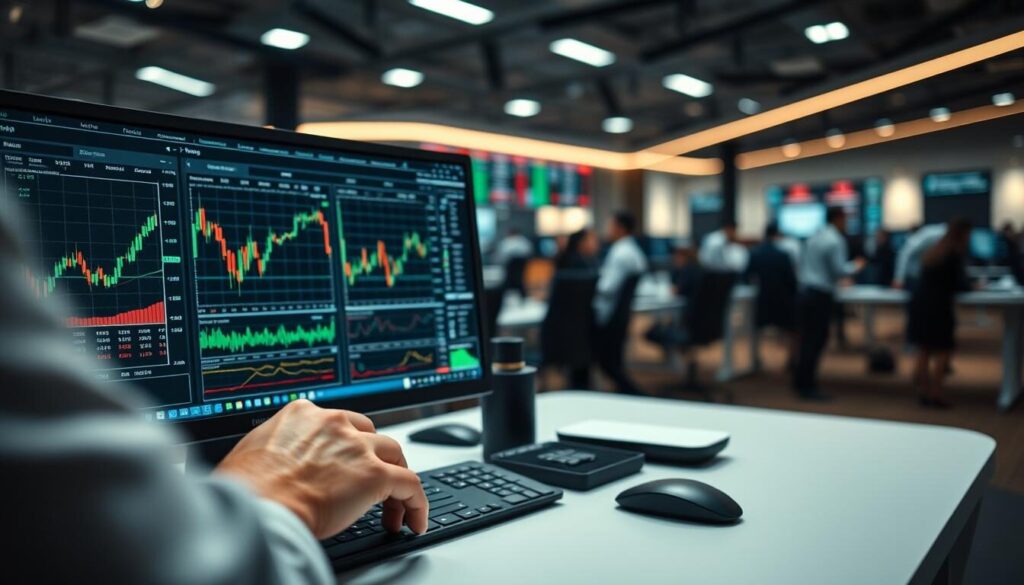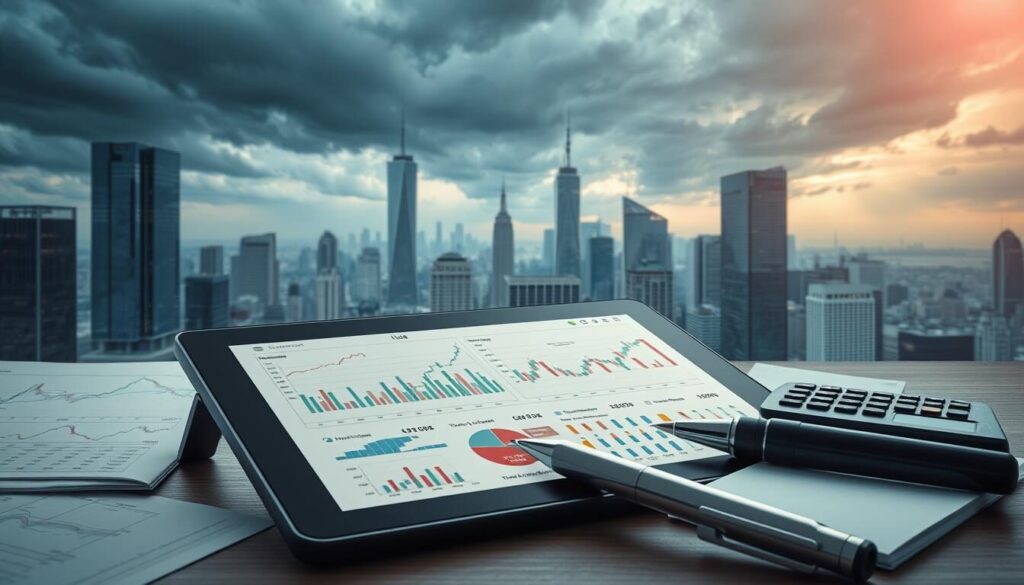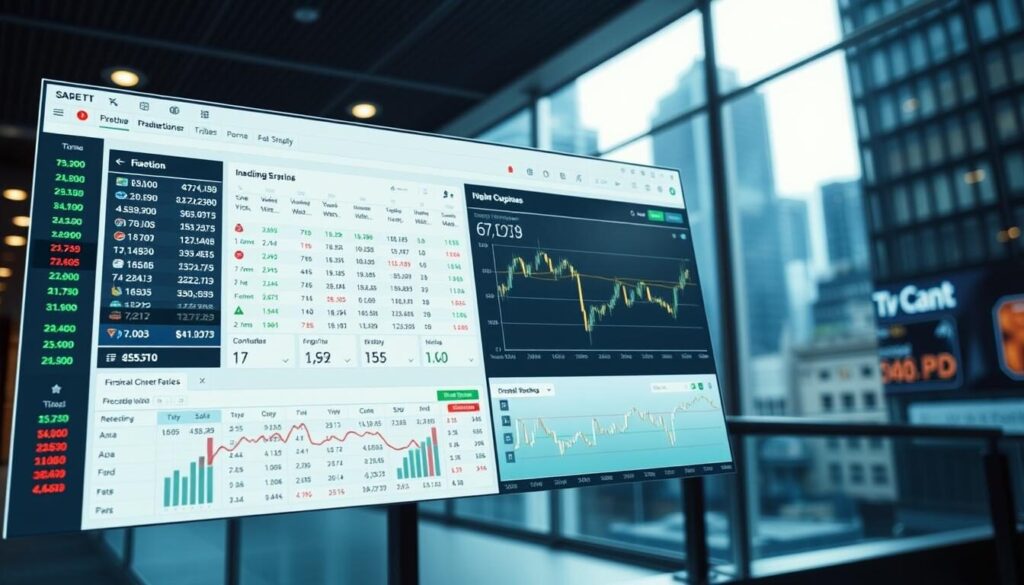Ever heard 85% of new traders don’t fully grasp leverage? Let’s fix that. Imagine standing at a crossroads: one path lets you speculate on prices without owning assets (think CFDs), while the other involves swapping actual currencies (hello, forex). Both roads promise adrenaline—but which has fewer potholes?
Here’s the deal: CFDs are like betting on whether your neighbor’s lemonade stand will boom or bust. You never own the lemons—just the right to profit from price swings. Forex? That’s exchanging dollars for euros at the airport… if the airport were a 24/7 global frenzy.
Both methods use leverage—the financial equivalent of a turbocharged engine. More power, but higher stakes. One wrong turn, and… well, you get the idea. The key? Knowing whether you’re chasing quick trades (CFDs’ playground) or diving into currency pairs (forex’s domain).
We’ll break it down like a TikTok tutorial: no jargon, just clarity. By the end, you’ll know which tool fits your risk appetite—and why some traders juggle both.
Key Takeaways
- CFDs let you speculate on prices without owning the asset; forex involves direct currency exchange.
- Lverage amplifies both gains and risks in both methods—like doubling down on a poker hand.
- Short-term strategies thrive in CFD and forex markets due to rapid price movements.
- Regulatory oversight varies, with CFDs often facing stricter rules than forex in many regions.
- Understanding your goals and risk tolerance is crucial before choosing a trading style.
Understanding CFDs and Forex Trading
Think of markets as languages. CFDs whisper “what if?” while forex shouts “right now.” One lets you speculate without ownership—like betting on a concert’s success without buying tickets. The other? Pure currency exchange dialed up to global proportions.
Definitions and Core Concepts
CFDs are financial handshake deals. You agree to pay/receive the difference between an asset’s opening and closing price. No lemons, just lemonade stand value swings. Forex? Swapping dollars for yen like you’re at a 24-hour airport kiosk—except rates change every millisecond.
Leverage works like a caffeine boost here. Borrowed power lets you control $10,000 positions with $100. Sweet until markets pull a plot twist. Both markets use it, but CFD leverage often runs hotter—like trading with jet fuel instead of gasoline.
How Each Market Operates
Forex never sleeps. Tokyo closes? London opens. New York taps out? Sydney kicks in. CFDs dance to their underlying assets’ schedules—stocks follow market hours, crypto never stops. You’re trading shadows, not the objects casting them.
Price moves hit differently. Forex measures shifts in pips—microscopic currency fluctuations. CFDs track full-value changes. A 1% swing on leveraged positions? Could mean 100% gains… or margin calls. Choose your adrenaline wisely.
CFD vs. Forex Trading: Which Is Better?

Picture this: you’re at a buffet with endless options—but only one plate. Choosing between these financial strategies feels similar. Let’s lay out the spread.
Key Comparisons at a Glance
One market lets you trade actual ownership—like buying concert tickets. The other? Betting on whether the show sells out. Here’s the breakdown:
- 24/5 access vs. asset-specific schedules (stocks sleep; crypto doesn’t)
- Micro price moves (pip-sized) vs. full-value swings
- EUR/USD trades vs. playing Tesla shares or gold prices
Liquidity’s high in both—like a crowded mall on Black Friday. But costs differ. Tight spreads for currency pairs; wider margins for niche assets.
Determining Your Trading Objectives
Are you hunting quick wins or playing the long game? Day traders often flock to rapid-fire currency moves—it’s speed chess with leverage. Swing traders? They might prefer holding positions in commodities or indices.
Ask yourself: Does analyzing GDP reports excite you? Or would you rather track oil inventories and tech earnings? Your answers reveal which tool fits your hands.
Remember—risk scales with ambition. A 10:1 leverage gamble on the yen could mean sleepless nights. A modest position on Apple shares via derivatives? Maybe your comfort zone.
Key Similarities in Trading Approaches and Risks

Ever tried cooking two dishes in one pan? That’s how these markets work—different ingredients, same sizzle. Whether you’re chasing currency pairs or synthetic positions, the heat comes from shared mechanics.
Short-Term Trading Flexibility
Both platforms thrive on split-second decisions. Think of it as a crowded subway turnstile—you slip through fast or miss the train. Traders profit from rapid moves, whether it’s a dollar dipping or oil spiking. No one owns the subway car; you’re just riding momentum.
Markets move like untangling headphone wires mid-commute. One sharp tug (or news event) and positions flip. Yet this chaos creates opportunities. Day traders juggle both arenas, hunting micro-shifts in price differences before lunch breaks end.
Liquidity and Transaction Costs
Liquidity here? Like a 24-hour gas station—always open, always flowing. Tight spreads keep costs low, whether you’re trading forex pairs or tech stocks. But watch the pump prices: overnight fees and slippage nibble at profits.
Risk flavors differ, but the recipe stays similar. Volatility serves gains and losses on the same plate. Your dollar stretches further with leverage, but so do potential setbacks. Smart traders? They use both tools like a Swiss Army knife—switching blades based on the task.
Bottom line: Whether you’re swapping euros or betting on Tesla’s swing, the endgame’s identical. Profit. The rest? Just market noise.
Fundamental Differences: Assets and Trading Structures
Imagine you’re at a flea market bartering collectibles versus betting on their value through a friend. That’s the core split here. One path hands you actual ownership—like clutching vintage vinyl records. The other? Predicting price swings without ever touching the merchandise.
Derivatives Versus Direct Ownership
When you trade forex, you’re swapping euros for yen like exchanging concert tickets. Real ownership. But with contracts? You’re the person shouting “I bet that Picasso’s value drops by Thursday!” No brushstrokes, just price predictions.
Opening an account for derivatives feels like signing a rental agreement. You’re borrowing positions, not buying neighborhoods. Traditional currency trades? More straightforward—like using a debit card abroad. The money required varies wildly: contracts let you control skyscrapers with pocket change, while direct purchases need deeper pockets.
The Range of Tradable Instruments
Forex is a currency buffet—dollars, pounds, pesos. Contracts? A Netflix library of assets: oil barrels, tech stocks, even crypto. More playgrounds, but steeper learning curves.
Platforms matter. Clicking “buy” on a currency pair is instant—like Amazon Prime. Managing contracts? More Ikea assembly. Both demand buying selling skills, but one’s a sprint, the other a hurdles race.
- Currency markets: 80+ pairs vs. 10,000+ synthetic assets
- Overnight fees on contracts vs. spread costs in forex
- Margin requirements: 2% vs. 5% average
Your strategy’s compass? Ask: “Do I want deeds or data?” One’s tangible, the other’s pure momentum.
The Impact of Leverage: Opportunities and Pitfalls

Leverage works like a borrowed jetpack—thrilling until you forget the fuel gauge. With a $1,000 account, your broker might let you control $10,000 in USD trades. That’s 10:1 power. But here’s the twist: a 1% price swing becomes 10% profit… or loss. Choose your altitude wisely.
Maximizing Profits with Leverage
Let’s say you buy a contract tracking oil prices with 50:1 leverage. A 2% jump means doubling your capital overnight. Brokers enable this through margin accounts—like putting 20 bucks down to “rent” a $1,000 position. Key moves:
- Small market shifts = amplified gains (think microscope vs. magnifying glass)
- Overnight trades can compound returns while you sleep
- Strategic stops lock in profits before volatility strikes
Understanding the Associated Risks
Now imagine trading EUR/USD with 100:1 leverage. A 1% dip wipes your entire stake. Poof—capital gone faster than a TikTok trend. Brokers aren’t villains here, but their margin calls arrive like overdue bills. One Reddit trader put it best:
“Leverage is free candy—tastes great until you need dental work.”
Three rules to avoid financial cavities:
- Never risk more than 2% of your capital per trade
- Treat high-leverage contracts like firecrackers—handle with gloves
- Check your broker’s margin requirements like you’d inspect a rental car
Your capital isn’t monopoly money. Leverage magnifies both ambition and error margins. Nail the balance, and you’ll ride waves instead of wiping out.
Market Factors and Economic Influences

Markets breathe like living organisms—expanding with good news, contracting on bad days. Whether you’re trading currencies or synthetic positions, economic weather reports dictate your umbrella needs. Let’s decode the forecast.
Government Policies: The Market Playlist
Central banks DJ the economy. When the Fed hikes rates, it’s like switching from classical to dubstep—markets jolt. Currency values shuffle as differences in national policies emerge. Remember 2020? Pandemic stimulus packages made the USD wobble like a freshman after finals.
Economic indicators act as crowd meters. Strong jobs data? Party mode. Weak GDP? Everyone heads for exits. These signals shape contracts tracking oil and indices alike. Pro tip: Watch unemployment stats like reality TV—drama guaranteed.
Supply, Demand, and Your Trading Dashboard
Oil prices spike when pipelines freeze. Wheat contracts dive during bumper harvests. Every instrument dances to its own supply-demand rhythm. Currency pairs? They’re duets between economies—one nation’s surplus is another’s deficit.
| Factor | Forex Impact | CFD Impact |
|---|---|---|
| Interest Rates | Direct currency valuation | Indices futures pricing |
| Commodity Surplus | Affects commodity dollars | Moves metal/energy contracts |
| Lot Sizes | Standard = 100,000 units | Varies by asset (1-500) |
Notice how lot sizes work? Forex uses jumbo jets (standard lots), while other instruments offer scooters or bikes. Choose your vehicle based on cargo size—aka risk tolerance.
Real-world proof: When Russia cut gas flows in 2022, European indices tanked faster than TikTok shares. Meanwhile, the EUR/USD pair did the electric slide downward. Differences in reaction speed? As stark as espresso vs. herbal tea.
Choosing a Suitable Trading Platform

Ever tried using a smartphone with cracked glass? That’s what a clunky trading interface feels like—frustrating and full of missed value. Your platform isn’t just a tool; it’s your financial cockpit. One wrong button could mean turbulence.
User-Friendly Tools and Intuitive Interfaces
Platforms like CAPEX get it. Their dashboards work like your favorite streaming app—clean menus, quick searches, and zero lag. Customizable charts? Think Netflix profiles but for tracking oil rates. You want to swipe left on complexity.
Good design does more than look pretty. It lets you spot trends faster than a barista recognizes regulars. Features like one-click orders or drag-and-drop alerts turn novices into ninjas. As one Reddit trader joked:
“My old platform required a PhD. Now I just point and shoot.”
Access to Diverse Trading Instruments
Why limit yourself to one playground? Top platforms offer access to currencies, stocks, even crypto—all from one login. It’s like having Disney+, HBO, and Spotify in a single tab. More options mean more potential to pivot when markets shift.
But variety isn’t enough. Transparent fee structures matter. Imagine a menu without prices—you’d walk out. Platforms listing spreads upfront (looking at you, IG’s beginner guide) let you manage funds without surprise charges. Competitive rates keep profits in your pocket, not theirs.
Your platform choice shapes your journey. Pick one that’s less obstacle course, more express lane.
Developing a Trading Strategy and Risk Management
Building a trading plan is like assembling IKEA furniture—skip the instructions, and you’ll end up with extra screws and wobbly legs. Your strategy needs two things: a blueprint for profits and crash pads for losses. Let’s nail this down.
Assessing Capital Requirements and Experience
Start with your wallet. If your account’s a studio apartment, don’t try furnishing a mansion. The golden rule? Never risk more than 2% of your capital per trade. That means a $5,000 account limits each position to $100 max. Think of it as financial portion control.
New traders often make this mistake: using a bazooka when a slingshot works. Match your position size to your skill level. As one Reddit user joked:
“Risk management is like ammo—you only get so many bullets. Don’t spray and pray.”
Long-Term Strategies versus Short-Term Trades
Day trading? It’s espresso shots—quick energy, frequent refills. Long-term plays? More like slow-cooker stews. Both need different spice levels:
| Factor | Quick Trades | Long Plays |
|---|---|---|
| Time Commitment | Screen-glued | Weekly check-ins |
| Risk per Position | Higher (1-2%) | Lower (0.5-1%) |
| Profit Potential | Small, frequent | Large, slow |
| Loss Impact | Controlled stops | Compound over time |
Three tips to avoid losses snowballing:
- Set stop-loss orders like fire alarms—automate safety
- Track your win/loss ratio like a baseball batting average
- Test strategies with paper trading before using real capital
Remember: A 2% loss today seems manageable. But 10 straight losses? That’s 20% gone. Protect your profits by treating each trade like a single Lego brick—not the whole Death Star.
Conclusion
Choosing between these methods is like picking between a Swiss Army knife and a laser level—both useful, but for different jobs. Market structure decides your playground: 24/5 currency pairs or niche assets with caffeine-fueled leverage. Your risk tolerance? That’s the seatbelt in this rollercoaster ride.
One lets you trade oil barrels and Tesla shares; the other thrives on yen-euro tangos. Both demand respect for margin calls and midnight market swings. Your platform choice? Make it as intuitive as your favorite app—clunky tools belong in the 90s.
Here’s the secret sauce: cfd trading offers more flavors, while forex trading runs on non-stop rhythm. Neither’s “better”—just different instruments in your financial orchestra. Ask yourself: Are you composing symphonies or dropping beats?
Before hitting “buy,” revisit your goals like checking a road trip playlist. Test strategies with paper accounts. Track wins like TikTok likes. And remember—every pro started as a rookie. Keep learning, stay curious, and treat leverage like hot sauce: a little goes a long way.
